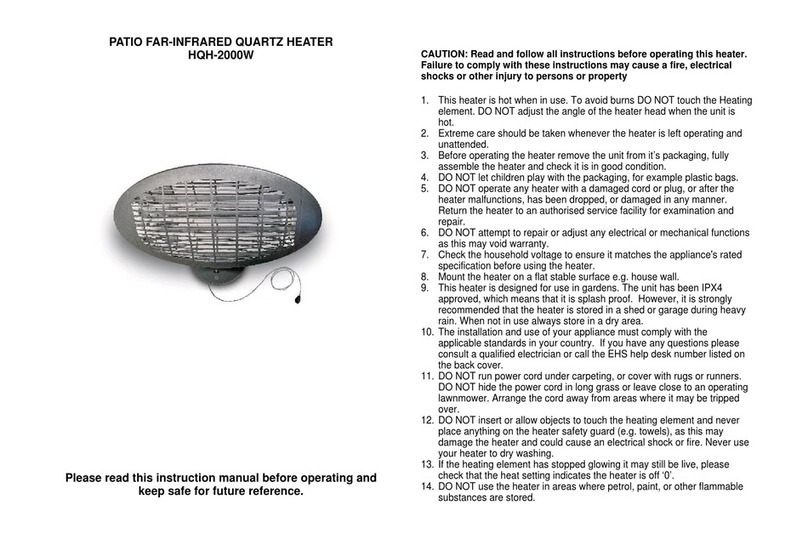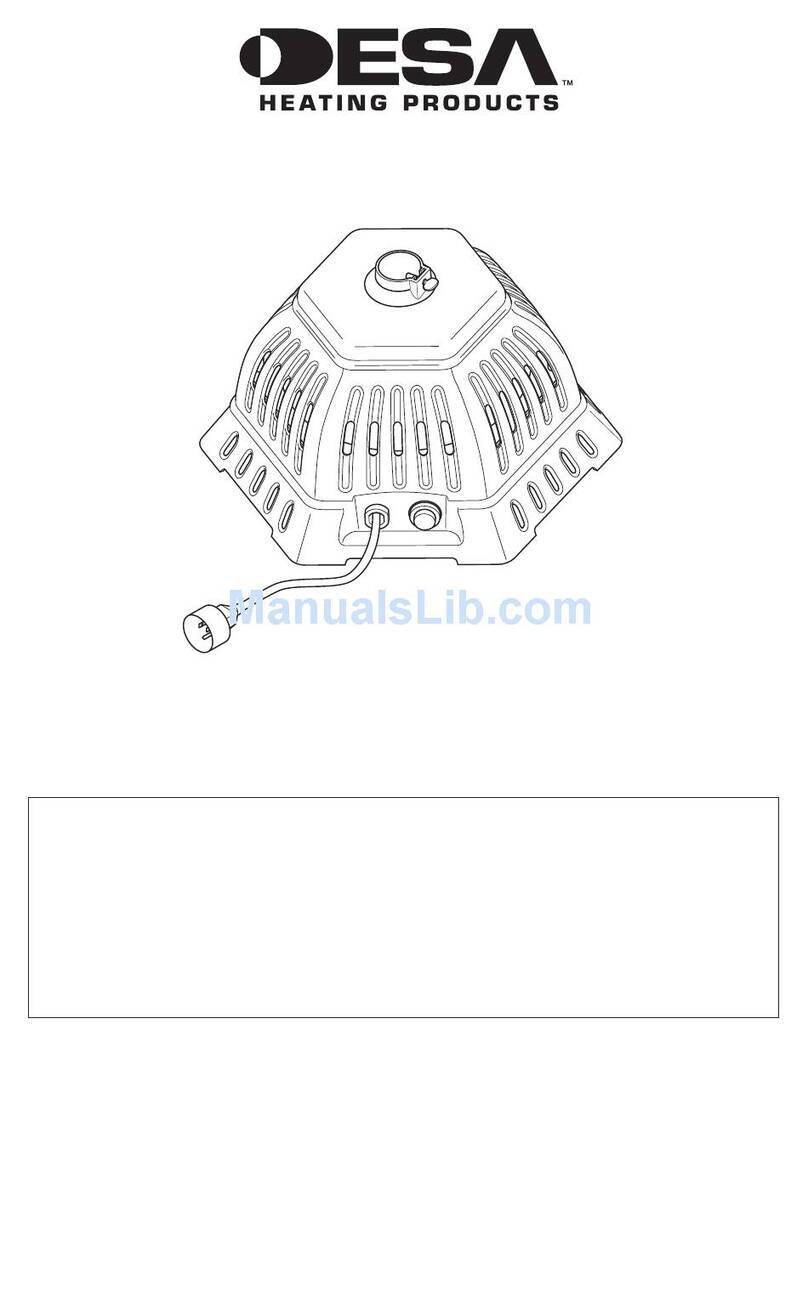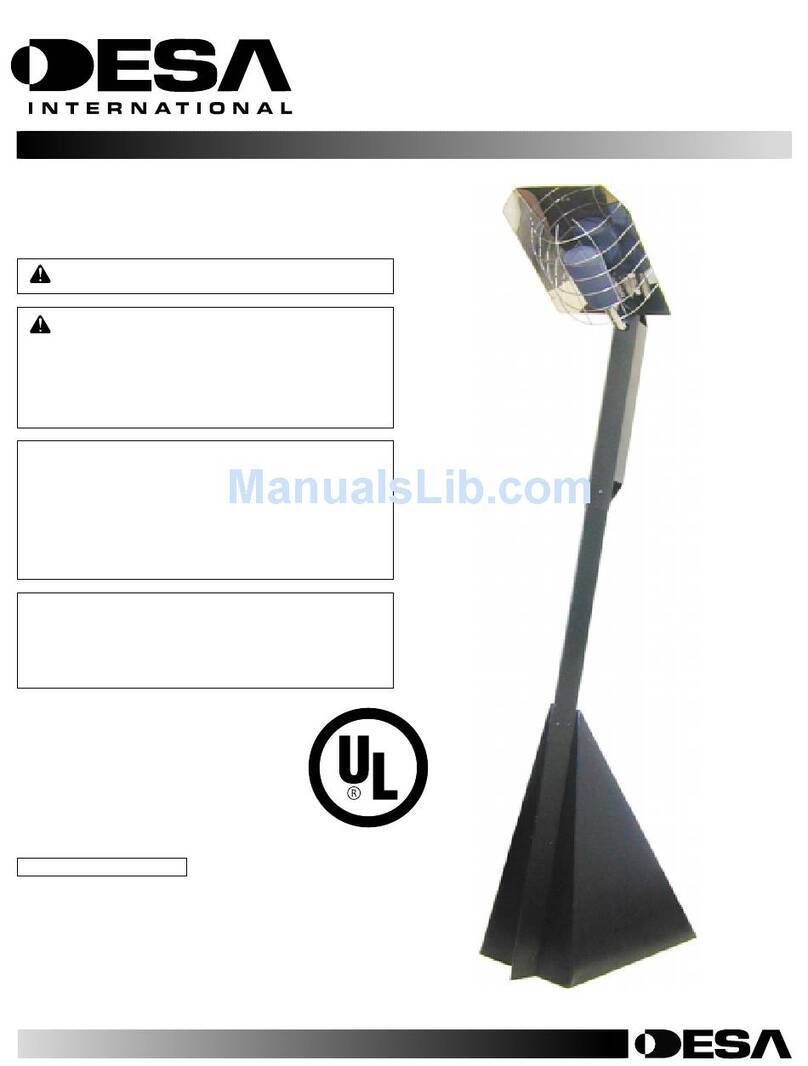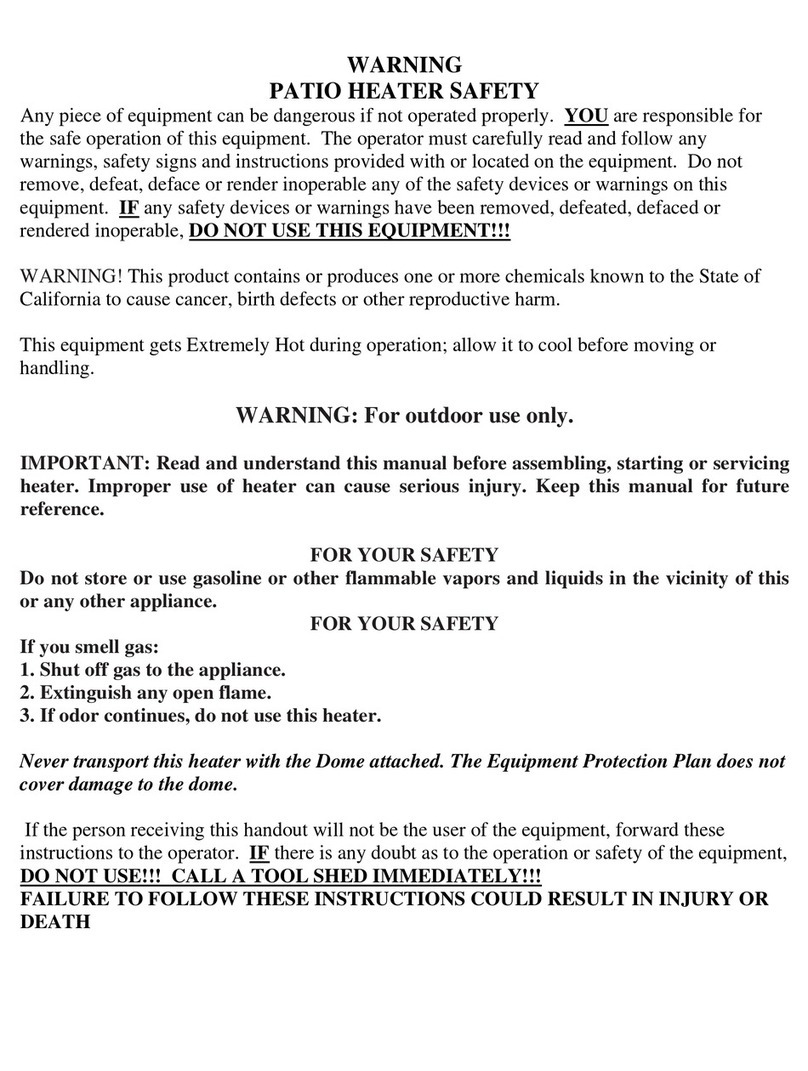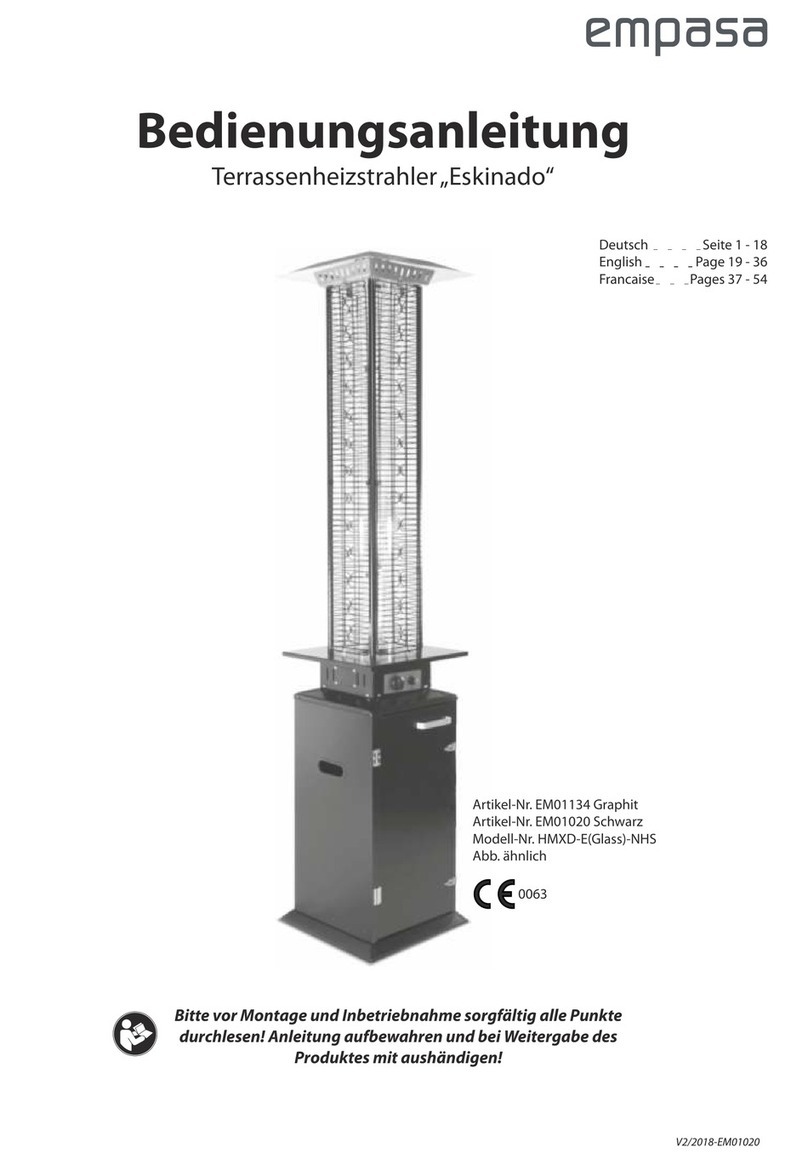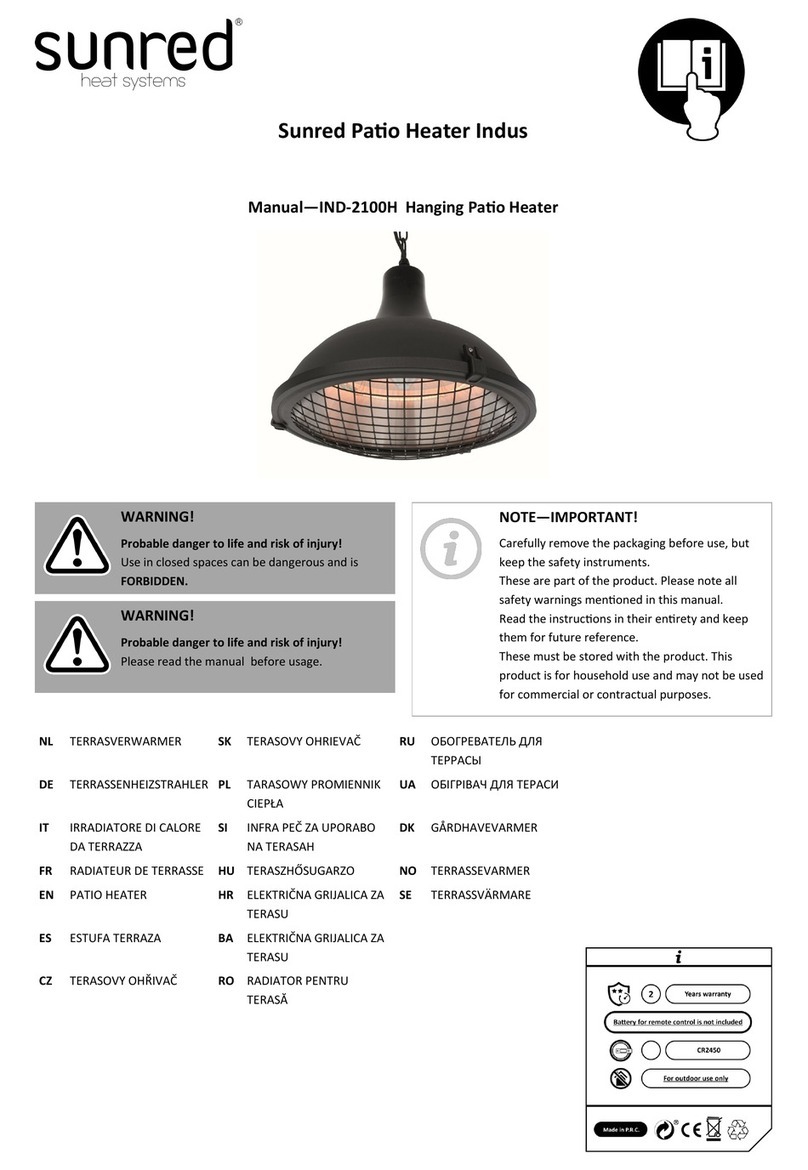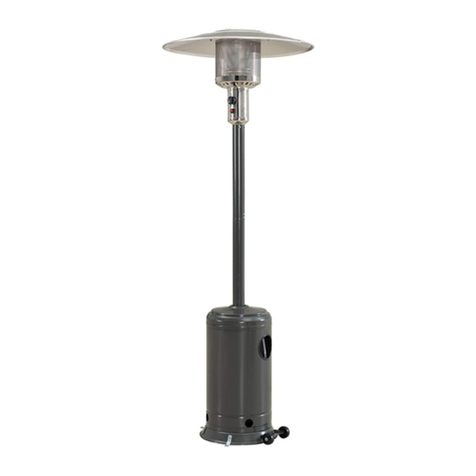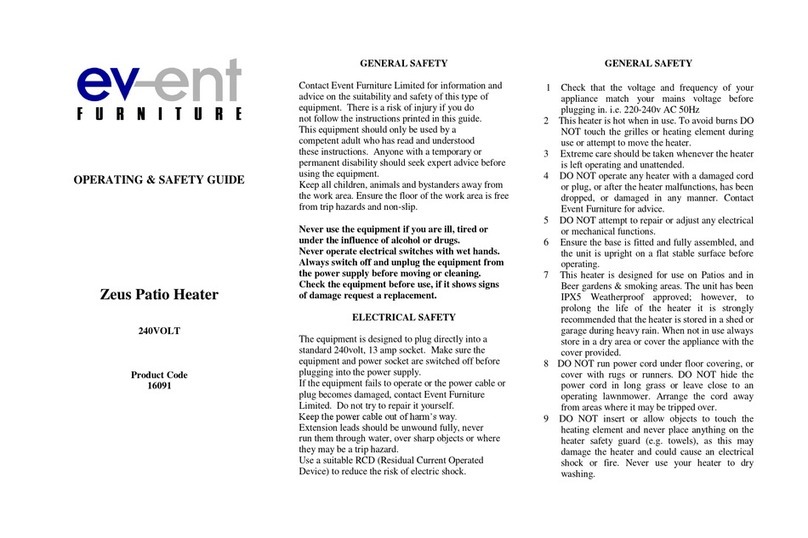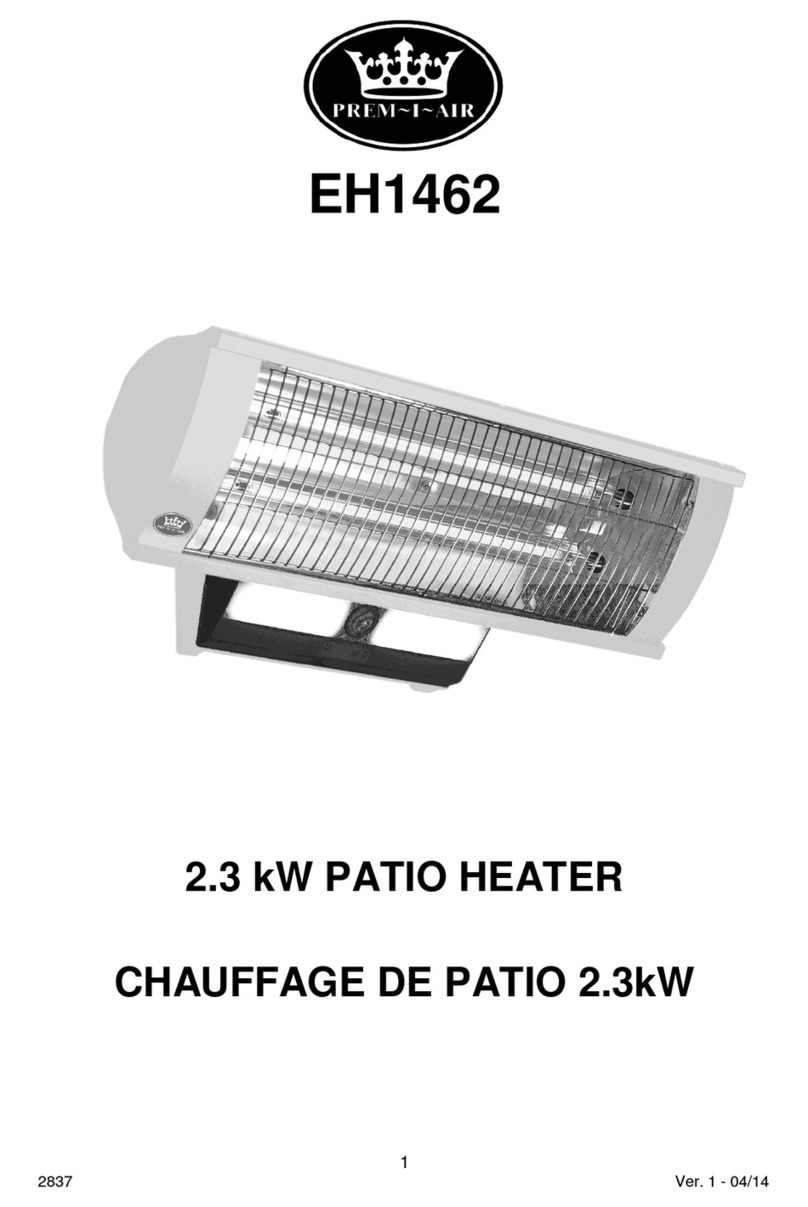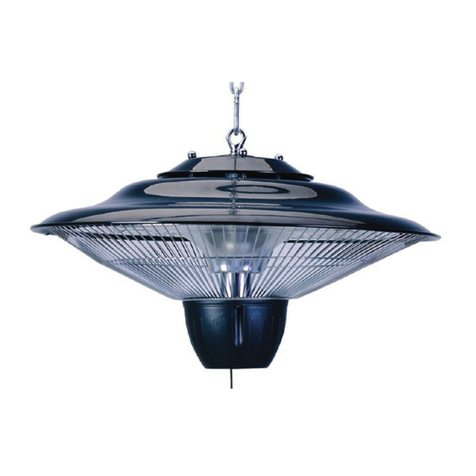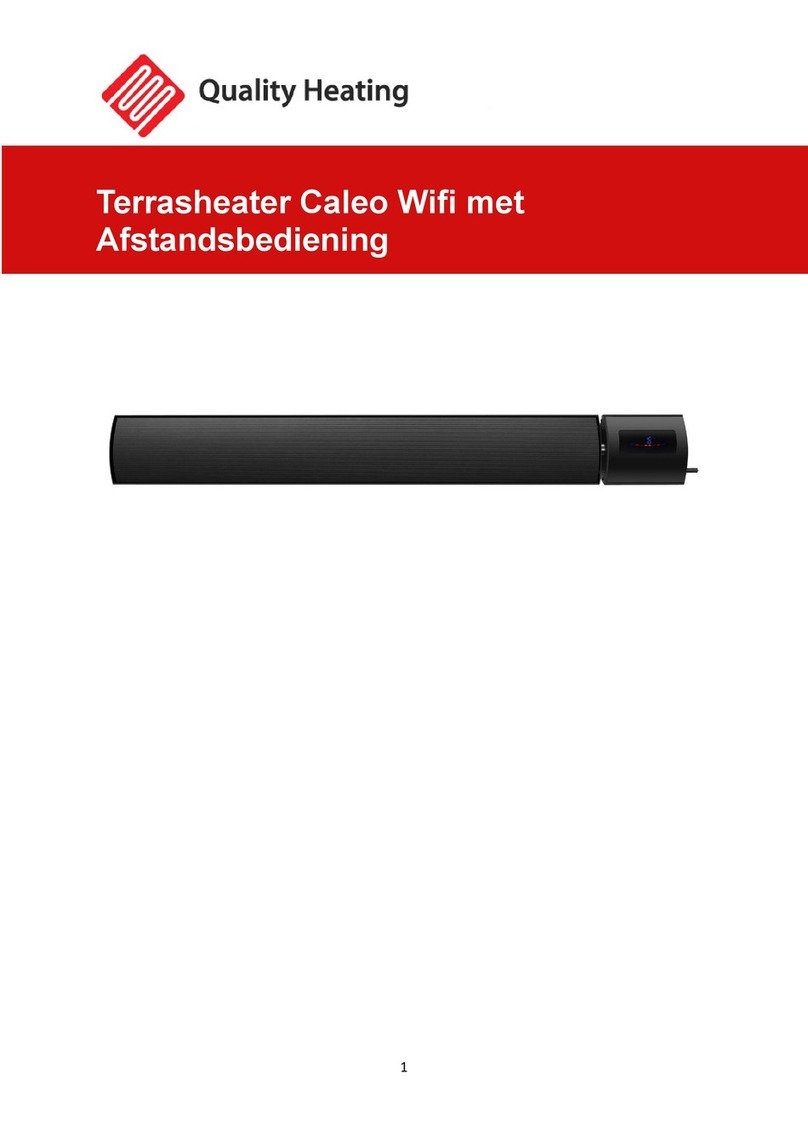www.desatech.com
114082-01A 3
We cannot foresee every use which may be made
of our heaters. Check with your local fire safety
authority if you have questions about heater use.
Other standards govern the use of fuel gases and
heat producing products for specific uses. Your
local authorities can advise you about these.
Carbon Monoxide Poisoning: Direct-Fired means
that all of the combustion products enter the heated
space. Even though this heater operates very close
to 100 percent combustion efficiency, it still pro-
duces small amounts of carbon monoxide. Some
people are more affected by carbon monoxide than
others. Early signs of carbon monoxide poisoning
resemble the flu, with headaches, dizziness, and/or
nausea. If you have these signs, the heater may not
be working properly. Get fresh air at once! Check
for proper ventilation and have heater serviced.
Propane Gas: Propane gas is odorless. An odor-
making agent is added to propane gas. The odor
helps you detect a propane gas leak. However, the
odor added to propane gas can fade. Propane gas
may be present even though no odor exists.
This is a propane, direct-fired heater. Propane is
heavier than air. If propane leaks from a connection
or fitting, it sinks to the floor, collecting there with
the surrounding air, forming a potentially explosive
mixture. Obviously, propane leaks should be avoided,
so set up the propane supply with utmost care. Read
Propane/LP Safety, page 4 for additional informa-
tion about detecting propane leaks. Leak check new
connections or reconnections with a soap and water
solution and follow all connection instructions herein.
Also, ask your propane dealer for advice on the
propane application and supply installation and ask
them to check it if there are any questions.
When the heater is to be operated in the presence of
other people the user is responsible for properly ac-
quainting those present with the safety precautions
and instructions, and of the hazards involved.
Make certain you read and understand all warn-
ings. Keep this manual for reference. It is your
guide to safe and proper operation of this heater.
1. Check the heater thoroughly for damage. DO
NOT operate a damaged heater.
2. DO NOT modify the heater or operate a heater
which has been modified from its original
condition.
3. Use only propane/LP gas.
SAFETY INFORMATION
Continued
4. Use only VAPOR WITHDRAWAL propane
supply. The propane cylinder must be arranged
for vapor-withdrawal, in accordance with the
Compress Gas Associations, Small Propane
Bottle Assembly. If there is any question about
vapor withdrawal, ask your propane dealer.
5. Never use the heater if the ballast weight is
not assembled onto the base. The base must
be weighted to avoid tipping.
6. Use only the factory preset regulator provided
with the heater. Use only replacement pressure
regulators specified in this manual.
7. If used, inspect the hose before each use of
the heater. If it is evident there is excessive
abrasion or wear, or the hose is cut, it must
be replaced prior to the heater being put into
operation. Use replacement hose assembly kit
100427-01 (see Accessories, page 11).
8. This heater is for OUTDOOR USE ONLY,
even so, make sure that there is ample fresh air
ventilation. Do not use in buildings, garages
or other enclosed spaces.
9. If at any time gas odor is detected, IMMEDI-
ATELY DISCONTINUE operation until the
source of gas has been located and corrected.
Read Propane Safety, page 4 for additional
information about detecting propane leaks.
10. Install the heater such that it is not directly
exposed to water spray, rain and/or dripping
water.
11. Maintain minimum clearance to people or
normal combustible material (like paper) of
3.6 ft. (1100 mm) from top and 2 ft. (609 mm)
from the reflector.
12. Operate only on a stable, level surface.
13. Do not spray aerosols near the heater during
use or shortly thereafter.
14. Do not clean heater with combustible or cor-
rosive cleaners. Use warm, soapy water.
15. Check control compartment burners and cir-
culation air passageways for free air passage,
make sure that there are no obstructions. These
areas are a common location for spider webs,
which can present a dangerous condition,
damage the heater and render it unsafe for
use. The heater must be checked if any of the
following conditions exist:
a) Gas smell along with predominate yellow
tipping of the burner.
b) Heater does not reach temperature.
c) Uneven burner glow.
d) Burner makes popping noises during nor-
mal use, other than during shutdown.


